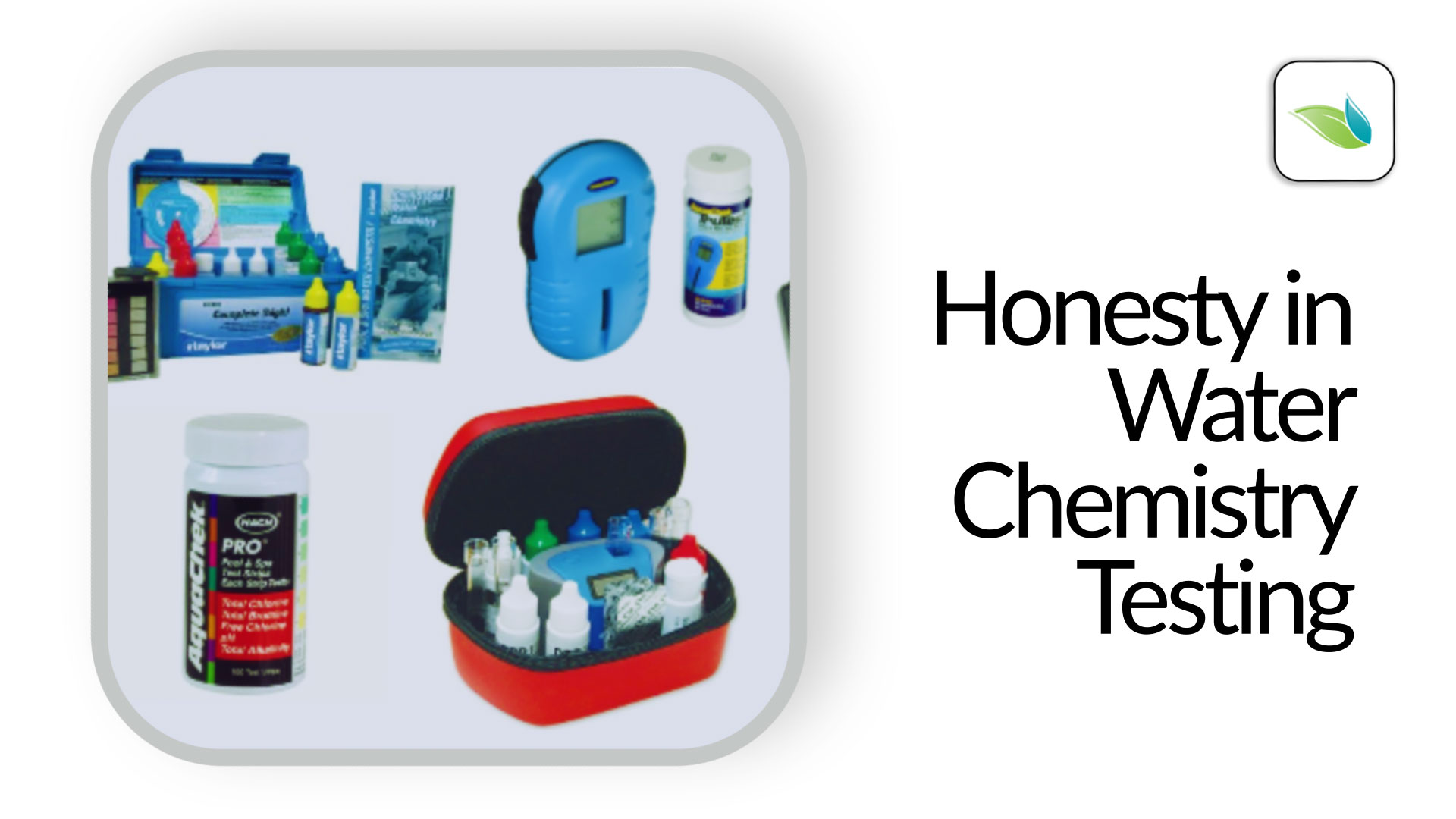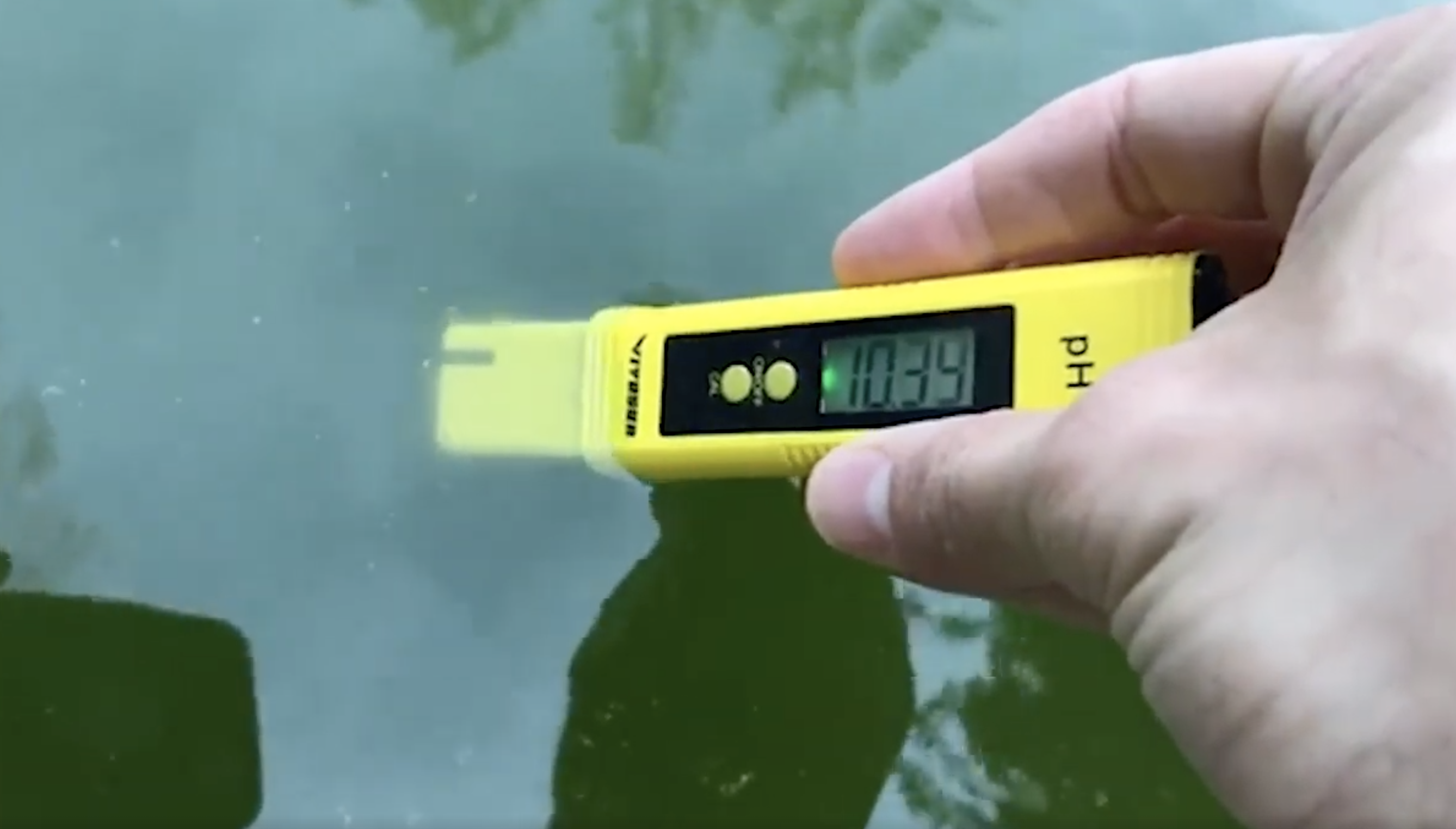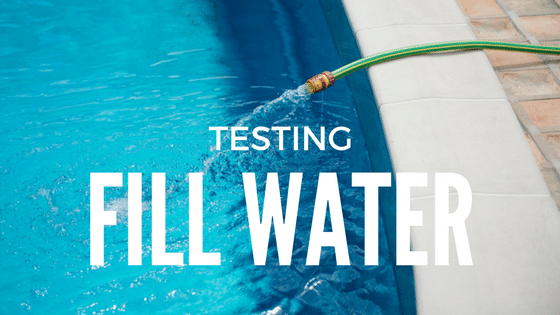Honesty in Water Chemistry Testing

Water chemistry readings are only as accurate as your test kit. And the history of that pool's water chemistry is only as accurate as your honesty (and diligence) when recording test results. In this article, we'll outline five rules for testing water chemistry.
Covered in this article:
- Five rules for testing pool chemistry
- Conclusion
Five rules for testing pool chemistry
Anyone taking care of pools knows the importance of testing water. But how invested are we in accurate results? How honest are we being if we take shortcuts? If we just assume things? If we ignore tap water? If we neglect our test kits?
We're not accusing anyone of being dishonest, per se. We just want to ask a question: how much certainty do you have in your water chemistry test results? Did you follow best practices? Did you write down the results as accurately as you could? Did you double check if something looked off?
To improve our water chemistry accuracy, here are five things to think about.
5. Accuracy depends on many factors
Accurate test results will not come from bad testing habits. Do you actually follow the instructions on the test kit? Do you calibrate your kit? Keep it clean? Store it out of direct sunlight? Care for it like its the most valuable tool you have for pool maintenance?
In our experience, even the most seasoned veterans tend to neglect test kits and take them for granted. Expiration dates on reagents are often ignored, and test kits are left out in the hot sun, which can ruin them–or at the very least distort the results.
One of the biggest testing mistakes we have noticed is ignoring water temperature. Most test kits only work within a certain water temperature range (example: 60ºF - 94ºF). Cold water is not going to yield accurate test results on most kits. So in that case, the best practice is to warm up the sample of water before testing it.
Testing accuracy also depends on where you grab the sample of water from. Did you just dip it in the water where the surface oils and sunscreen are? Or did you get your elbow wet like you're supposed to?
And what about when your readings are off the charts? Do you take the time to dilute the sample with distilled drinking water to get a more accurate reading? Most people do not. But if that's the case, you're not testing...you're guessing.
4. If your water chemistry exceeds the range of the test kit, say so
One of the many lessons learned from the late Greg Garrett (NPC technical director) came from a story he told during the NPC startup certification class. He was an expert witness in court, and under oath testified that the swimming pool in question had zero Cyanuric Acid in it. In cross-examination, however, the lawyer questioned this by pulling out the test kit he used.
The test kit uses a melamine reagent that clouds in the water, creating turbidity. The test involves looking down through the sample of cloudy water until the black dot at the bottom of the vial is no longer visible. If you get all the way to the top of the vial and can still see the black dot, you have less than 30 ppm CYA. But Greg said zero CYA.
The lawyer asked Greg if the test kit had an expansion tube to get all the way to zero. Zero ppm was assumed and not proven, and it was a painful and embarrassing lesson learned for Greg. To his credit, he shared this experience openly in class and cautioned against any of us making the same mistake.
3. Use a better test kit when necessary
Expanding on the last two rules, if you have a factor that exceeds the ability of your main test kit to read, we advise you to get a secondary test kit or device that can better read it. For instance, we use a digital pH probe if the pH is over 8.0 on a reagent test kit. We used it in a green pool to discover the green pool's pH was MUCH higher than we thought it could ever be (10.39 pH). And it taught us a lesson about pH and green pools.

When we visit customers and go to their pools, we test the water. If we do not have the necessary kit(s) for accurate water testing, we collect a sample in a clean water bottle, and we take it somewhere with a better kit. You may not need to purchase a high-dollar testing machine, as most local pool stores have one. Have them test the water for the factors you need.
There are four types of water testing kits most commonly used in the aquatics business.
- Color Comparison (test strips or colorimeter)
- Drop Count (titration)
- Turbidity (like a cyanuric acid test)
- Electronic (like a photometer)
If you are color blind (particularly with red-green), consider an electronic photometer to read the results for you. For commercial pools, electronic probes for ORP, pH, and chlorine are strongly recommended. Just find the test kit that works for you, and supplement it where necessary.
2. Test (and record) the tap water chemistry
This is one of our most drilled talking points at Orenda. Knowing what water chemistry comes out of the tap is paramount for success. This is especially true for pools with auto-fill or pools and spas that regularly drain some water to dilute. To balance the incoming water, you need to know what's in it. Water testing is the best way to know for sure. Remember, if you're not testing, you're just guessing.
Back to those of us who do initial water treatments for startups...accurate water testing of the fill water is critical to success.
Another way to find out what is in the tap water is to request the test results from the water treatment plant. Municipal water treatment plants are required by law to test their water, and it is public information. Just ask, and you shall receive. Tell them what you're looking for too...don't just ask for pH, alkalinity, and the basics. Get everything you may need, including metals, combined chlorine, nitrates, and phosphates. Knowledge is power.
Once you know the tap water chemistry, record it! Write it down. Save it to the customer's profile in your pool service/routing software. The point is, you will want to be able to easily reference the tap water chemistry if there is an issue. Otherwise you're treating a pool with no idea what is replenishing it.
1. Focus on the LSI
Even if some factors are outside of textbook range chemistry guidelines, the LSI should be balanced at all times. After all, water cares about the LSI, and it never read the textbooks. The LSI is the aggregate of several factors that tell us how balanced water is (based on the saturation equilibrium of calcium carbonate, CaCO3).
It's often impossible to maintain LSI balance while being within the textbook ranges. Especially when the water is cold. You could be 'textbook perfect', yet be destroying the pool surface and equipment with aggressive, low-LSI water. It happens too often, and we are on a mission to educate the world about it. Don't let it happen to you.
It is perfectly fine to have over 400 ppm calcium hardness. And if you have enough calcium hardness, it can also be perfectly fine to have less than 80 ppm total alkalinity. As long as the LSI is balanced, these parameters can be moved around to meet your water's needs. In fact, we recommend having lower TA and higher calcium to help contain pH and maintain balance the entire time.
Conclusion
Customers depend on you to manage water the right way...just like we expect a carpenter to measure before cutting, and a plumber to seal every pipe watertight. Accurate, honest water testing is the first step in getting there in the pool service business.
